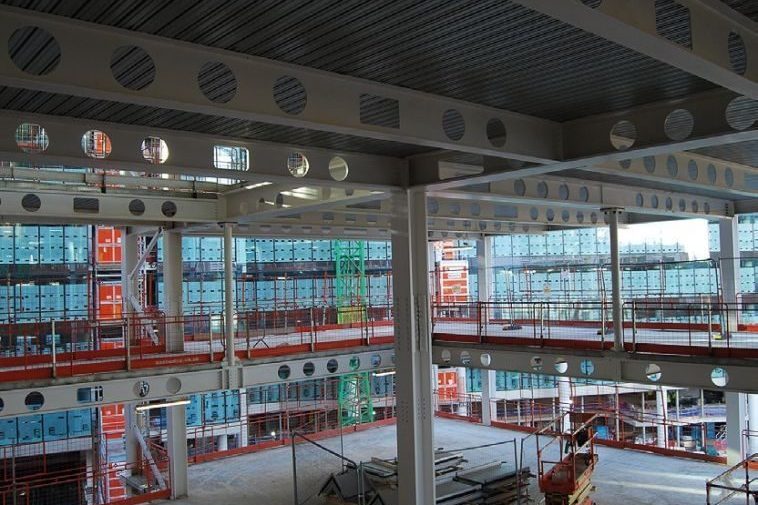What is it and why do we need it now?
To deliver sustainability in construction all stages of a building’s life must be considered from the very beginning of a project – including its end-of-life.
While this might sound like a ‘topsy turvy’ approach, it is another way in which the construction industry can contribute to the circular economy. By considering the likely outcomes for a building at the end of its design life, constructors can design decommissioning, reuse and recycling into buildings, to deliver far-reaching, long-lasting environmental benefits.
This concept, known as Design for Deconstruction (DfD), sees buildings designed and constructed in such a way that materials, members and components can be removed and reused at a building’s end-of-life or refurbished and reconfigured at the end of its design life. This circular solution can keep buildings in use or materials in circulation to reduce both demand for raw materials and waste creation. It is one of the key drivers for designing out waste in the construction sector.
For buildings using structural steel, experienced steelwork contractors can play a vital role in DfD by designing adaptable structures, using reusable materials and components, and keeping records which are accessible.
Working in this way is essential since the construction and the built environment sectors are the biggest users of materials and biggest generators of waste in the UK. Using more than 400 million tonnes of materials each year, we must collectively take responsibility for resource efficiency.
The benefits of DfD are many: improving the whole-life environmental impact of a building by reducing waste, carbon emissions and long-term costs.
How to design for deconstruction:
To get Design for Deconstruction right, there are two key considerations:
- What materials and components are used; and
- How materials and components are assembled or constructed and, therefore, deconstructed.
There are then common principles to work to, including:
- Designing for prefabrication, preassembly or modular builds – any components or parts which are easily erected or constructed will as easily be removed and reused.
- Standardising connection details – using simple, repeated or consistent details to deliver efficient construction and, later, deconstruction.
- Minimising materials – using limited types of materials or components to also deliver initial cost efficiencies and, later, streamlined deconstruction.
- Using reusable materials – prioritizing reusable materials, over just recyclable – such as structural steel, copper, brick or wood – to keep materials in circulation.
- Simplifying or consolidating services and systems – This will also make systems more accessible for repair or replacement works.
Additionally, for new residential buildings, BRE – the international building science centre – has developed an outline methodology to measure the viability, efficiency and effectiveness of DfD principles. This guides designers to consider:
- Materials and components choices
- Types of connections used
- Accessibility of components and connections
- The deconstruction process
- Level of project information relating to deconstruction
For any building type, the latter point of deconstruction information availability is essential. Records of considerations for refurbishment, reuse and recycling must be made accurately and kept accessible to building’s current and future owners or managers.
How to design a steel frame for deconstruction:
Both the above principles and BRE methodology can be applied to larger or commercial building projects by experienced and conscientious contractors. As steelwork contractors design the individual components of a frame, we can play an important part in guiding and streamlining the deconstruction process and improving recovery rates of materials through considered design.
For example, for materials and components choices, a steel frame can have members removed for immediate reuse. Similarly, for types of connections used, using bolts to connect members in a steel frame means these can be removed at a structure’s end-of-life and reused elsewhere – as opposed to welding which requires single-use materials like wire or rod. For accessibility of components and connections, structural steel offers ease of access for inspections or repair works.
Additionally, steelwork contractors can maximise end-of-design-life potential by designing structures which are more easily reconfigured or refurbished at a later date, using flexible or open-plan spaces for example. This allows for the ‘unknown unknowns’, for retrofitting to add new features in the future, or allow for adaptations for buildings to withstand changes in the climate or weather.
Design for deconstruction is another essential way for the construction industry to reduce ongoing environmental impact and demonstrate its commitment to reducing carbon emissions and achieving net zero targets.

